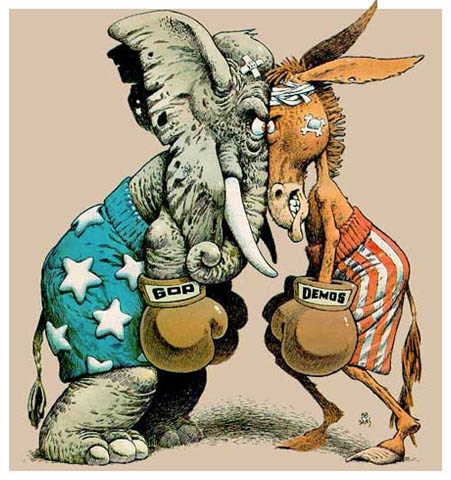******
Who can be trusted on climate data? When you learn that people inside NASA doubted their own data and then lied about, you realize that NASA has a huge problem of credibility. Why didn't all of this come out years ago instead of keeping on the same path of using data they didn't trust? With all this evidence the Obama and the EPA are still trying to sell the political agenda of Global Warming disaster awaits.
The credibility within the climatology scientific world is shot. It is going to take a lot of facts and evidence for them to get even a shred of credibility back. What they have done to their fellow scientists should get them kicked to the curb and no longer be in charge of anything more then taking out the trash. They need to work their way back up in their field starting at the bottom. Maybe then they will learn how important it is to have the data that cannot be disputed instead of a political agenda.
Even more disgusting is that all of this was known by a reporter in August 2007 who sat on the story. Did his editor or publisher kill the story? Not only does the scientific community have a problem but so does the media. Politics needs taken out of news stories to be replaced by media members at all levels who report facts, not spin, their personal opinion or a political agenda.
Read this and ask yourself why NASA personnel have not been fired.
Climategate Stunner: NASA Heads Knew NASA Data Was Poor, Then Used Data from CRU
New emails from James Hansen and Reto Ruedy (download PDF here) show that NASA's temperature data was doubted within NASA itself, and was not independent of CRU's embattled data, as has been claimed.
March 10, 2010 - by Charlie Martin
Email messages obtained by the Competitive Enterprise Institute via a Freedom of Information Act request reveal that the climate dataset of NASA’s Goddard Institute for Space Studies (GISS) was considered — by the top climate scientists within NASA itself — to be inferior to the data maintained by the University of East Anglia Climate Research Unit (CRU).
The NASA scientists also felt that NASA GISS data was inferior to the National Climate Data Center Global Historical Climate Network (NCDC GHCN) database.
These emails, obtained by Christopher Horner, also show that the NASA GISS dataset was not independent of CRU data.
Further, all of this information regarding the accuracy and independence of NASA GISS data was directly communicated to a reporter from USA Today in August 2007.
The reporter never published it.
—————————————
There are only four climate datasets available. All global warming study, such as the reports from the UN Intergovernmental Panel on Climate Change (IPCC), must be based on these four.
They are: the NASA GISS dataset, the NCDC GHCN dataset, the CRU dataset, and the Japan Meteorological Agency dataset.
Following Climategate, when it became known that raw temperature data for CRU’s “HADCRU3″ climate dataset had been destroyed, Phil Jones, CRU’s former director, said the data loss was not important — because there were other independent climate datasets available.
But the emails reveal that at least three of the four datasets were not independent, that NASA GISS was not considered to be accurate, and that these quality issues were known to both top climate scientists and to the mainstream press.
In a response to reporter Doyle Rice of USA Today, Dr. Reto Ruedy — a senior scientist at NASA — recommended the following:Continue using NCDC’s data for the U.S. means and Phil Jones’ [HADCRU3] data for the global means. …
We are basically a modeling group and were forced into rudimentary analysis of global observed data in the 70s and early 80s. …
Now we happily combine NCDC’s and Hadley Center data to … evaluate our model results.
This response was extended later the same day by Dr. James Hansen — the head of NASA GISS:[For] example, we extrapolate station measurements as much as 1200 km. This allows us to include results for the full Arctic. In 2005 this turned out to be important, as the Arctic had a large positive temperature anomaly. We thus found 2005 to be the warmest year in the record, while the British did not and initially NOAA also did not. …
It should be noted that the different groups have cooperated in a very friendly way to try to understand different conclusions when they arise.
Two implications of these emails: The data to which Phil Jones referred to as “independent” was not — it was being “corrected” and reused among various climate science groups, and the independence of the results was no longer assured; and the NASA GISS data was of lower quality than Jones’ embattled CRU data.
The NCDC GHCN dataset mentioned in the Ruedy email has also been called into question by Joe D’Aleo and Anthony Watts. D’Aleo and Watts showed in a January 2010 report that changes in available measurement sites and the selection criteria involved in “homogenizing” the GHCN climate data raised serious questions about the usefulness of that dataset as well.
These three datasets — from NASA GISS, NCDC GHCN, and CRU — are the basis of essentially all climate study supporting anthropogenic global warming.
Charlie Martin is a Colorado computer scientist and freelance writer. He holds an MS in Computer Science from Duke University, where he spent six years with the National Biomedical Simulation Resource, Duke University Medical Center. Find him at http://chasrmartin.com, and on his blog at http://explorations.chasrmartin.com/.
Source: Pajamas Media





No comments:
Post a Comment